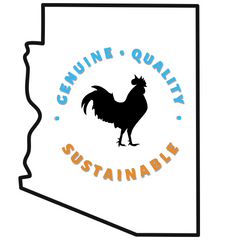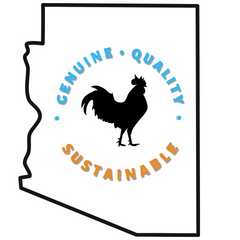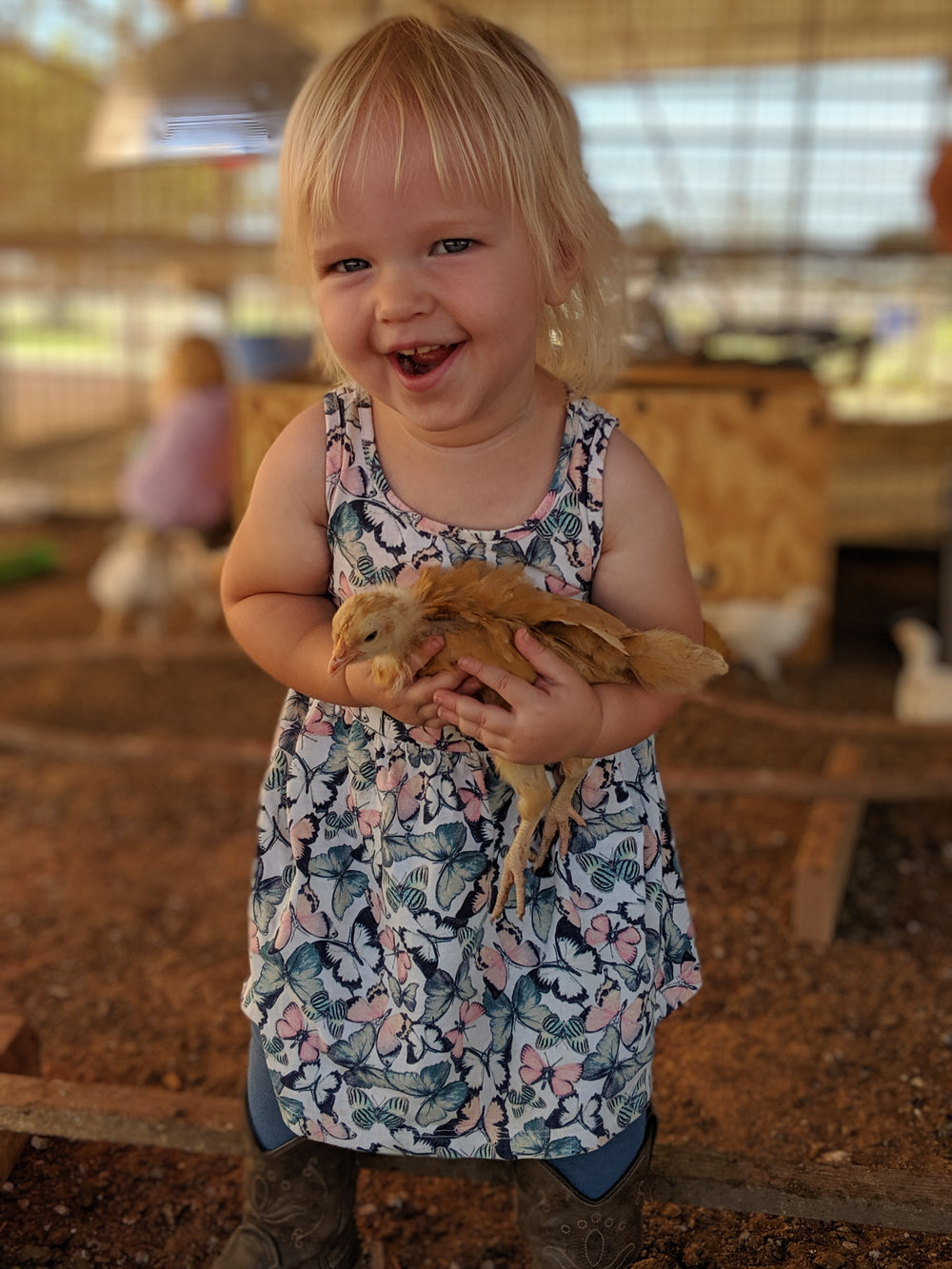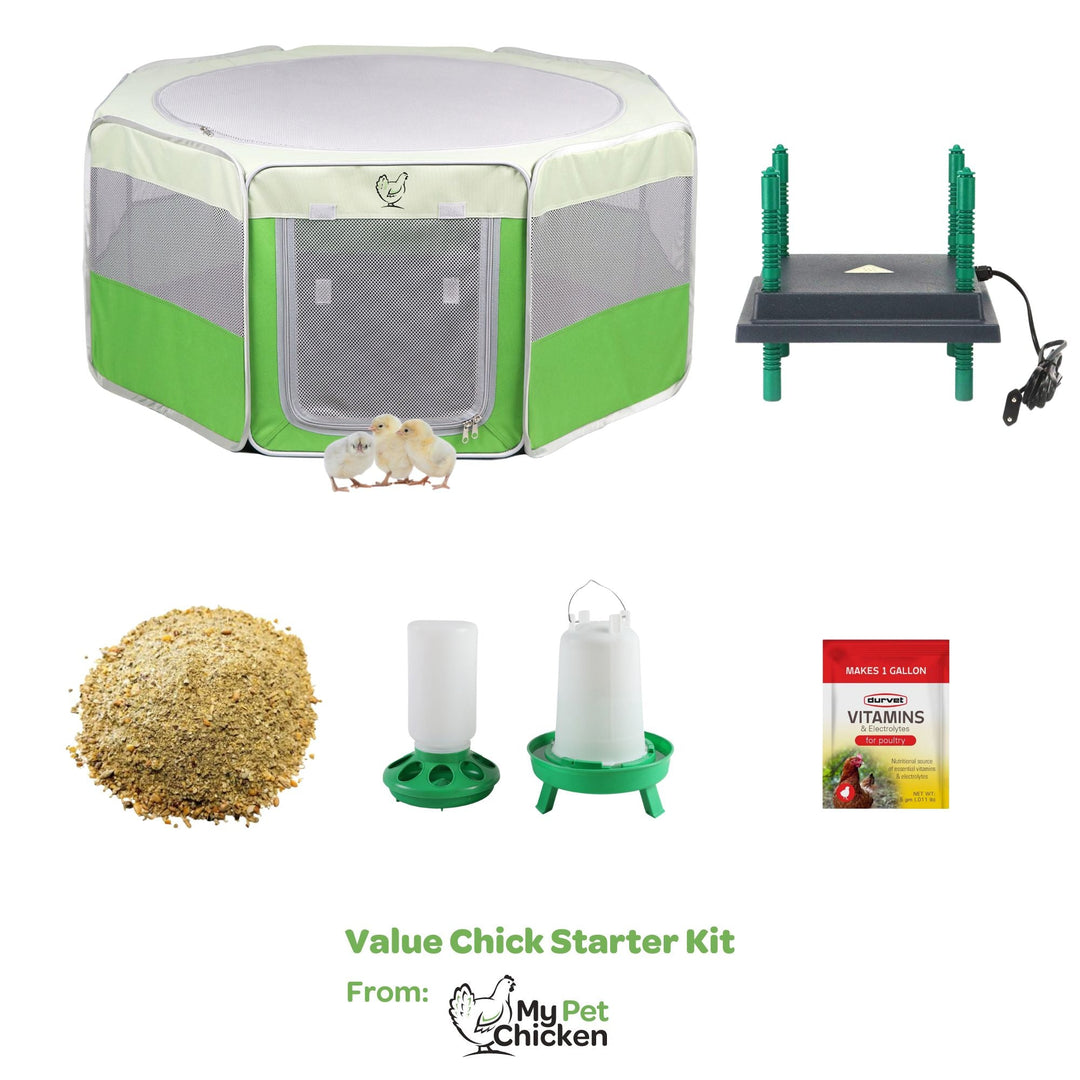Buy Antibiotic‑Free Chicken Health Kit: A Practical, Budget‑Wise Guide to Building a Preventive Wellness Bundle
Buy Antibiotic‑Free Chicken Health Kit: A Practical, Budget‑Wise Guide to Building a Preventive Wellness Bundle
Going antibiotic‑free doesn’t mean doing less for your flock—it means planning smarter. A well‑built natural health kit centers on hydration, heat management, micro‑biome support, sanitation, and strong biosecurity so minor issues never snowball. This guide pulls from Az Chickens’ Southwest‑focused education to help you assemble a kit that fits your climate, flock size, and budget—then use it with confidence year‑round.
Key Takeaways / Summary
- What to include: hydration and electrolyte support, probiotics, vitamin/mineral support, coop sanitation tools, pest‑pressure controls, biosecurity basics (quarantine setup, boot bath), and monitoring tools (thermometer/hygrometer, scale).
- Seasonal priorities: hot‑weather readiness is non‑negotiable in the Southwest—plan shade, airflow, electrolyte rotation, and cooling strategies. See Hot‑Weather Health & Nutrition.
- Antibiotic‑free strategy: prevention beats reaction. Build routines around hydration, gut health, sanitation, and isolation at first sign of stress. Reference Chick Care Tips for rotation ideas.
- Budgeting: invest first in durable hydration and ventilation/sanitation tools; add consumables (electrolytes, probiotics) you’ll actually rotate. Favor reusable over disposable items.
- Climate‑smart choices: in extreme heat, kits should prioritize water stability, electrolytes, and coop airflow. Breed selection helps, too—see Heat‑Resistant Breeds.
- Biosecurity matters: region‑specific pressures like Marek’s underscore the value of quarantine and immune support. Read Marek’s Disease in Arizona.
- Sustainability: choose durable tools and concentrate‑style refills to reduce cost/waste over time—see Sustainable Hot Climate Practices.
- For beginners: use a complete starter checklist to avoid piecemeal gaps. Start here: Beginner Chicken Starter Kit Guide.
What an Antibiotic‑Free Chicken Health Kit Should Include
Think of your kit as a preventive ecosystem—hydration, gut support, sanitation, biosecurity, and monitoring work together so you rarely need to chase symptoms. Set your routines now so they’re effortless to follow later. Az Chickens’ Chick Care Tips and Hot‑Weather Health & Nutrition are helpful playbooks for timing and rotation.
- Hydration and electrolytes: Stock electrolyte mixes appropriate for chicks and adults and rotate during heat spikes, transport, or after coop cleaning days. Choose waterers that are easy to scrub and keep cool in summer. Keep a dedicated scoop and clean, labeled mixing container in your kit so dosing is consistent.
- Probiotics: Use after stress events (heat surges, flock additions) and after any electrolyte cycle. A probiotic rotation helps stabilize the gut, improving nutrient uptake and resilience—core to antibiotic‑free wellness.
- Vitamin/mineral support: A general vitamin mix for short, targeted support (e.g., post‑molting, integration stress) goes a long way—avoid constant, heavy supplementation without a specific reason.
- Sanitation toolkit: Include a coop‑safe cleaner, scrub brush, pump sprayer or labeled spray bottle, disposable gloves, and a small bucket. Add a litter rake and a dedicated trash bag roll for weekly spot‑cleaning. Consistent sanitation underpins everything; see practical context in Housing Environment.
- Pest‑pressure controls: Keep a coop crack‑and‑crevice brush for roost ends and seams, and keep records of inspection dates for mites/lice. Good bedding hygiene and ventilation are foundational to staying antibiotic‑free.
- Biosecurity basics: Set up a boot bath container with a labeled disinfectant, keep a spare set of coop shoes, add disposable gloves, and maintain a simple quarantine setup (crate or pen, separate feed/water). Learn why this matters in Marek’s Disease in Arizona.
- Monitoring tools: Place a thermometer/hygrometer in the coop, keep a notebook or app for daily notes, and use a kitchen scale for chicks or smaller breeds. Early detection of stress signals reduces the chance you’ll ever need antibiotics.
- First‑response natural care: Stock isotonic saline for rinsing eyes/nasal passages, a gentle antiseptic wound wash, clean gauze, styptic powder for nail/comb nicks, and poultry‑safe ointment. Tape simple use instructions inside the kit lid so anyone can follow them.
Seasonal Protocols: Build for Your Climate First
Once your kit is assembled, map it to your local weather patterns. In the Southwest, heat is the prime health stressor. Your antibiotic‑free kit lives or dies by how well it supports hydration and cooling routines. Az Chickens’ Hot‑Weather Health & Nutrition hub centralizes practical steps that belong on your calendar.
-
High‑heat routine (summer, heatwaves):
- Run electrolytes in the a.m. of extreme‑heat days; switch back to fresh water by evening.
- Add shade, increase airflow, and ensure multiple water stations so timid birds drink freely.
- Offer wet mash or chilled treats sparingly to boost water intake and reduce heat load.
- Breed choice helps: Heat‑hardy breeds handle stress better, which supports antibiotic‑free goals. See Az Chickens’ Heat‑Resistant Breeds for planning.
- Transitional seasons: Dust management, ventilation checks, and waterer sanitation prevent respiratory and gut stress as temperatures swing. Reference Housing Environment for airflow and bedding notes.
Budget Tiers: Value, Core, and Premium Builds
Start with durability where it matters most—components you touch daily or that directly touch water/food. That’s where craftsmanship and materials deliver real, long‑term value. Use the tiers below to match your goals and scale up as your flock grows.
-
Value Build (starter):
- Basic coop‑safe cleaner and brush, a labeled spray bottle, electrolyte packets, probiotic packets, disposable gloves, and a simple boot bath setup.
- Focus: essential consumables plus sanitation basics to steady hydration and gut health.
-
Core Build (everyday keeper):
- Add a thermometer/hygrometer, a better waterer that’s easy to scrub (wide openings, smooth interior), a dedicated mixing container with scoop, and quarantine supplies (crate, spare waterer/feeder).
- Focus: robust hydration management, easier cleaning, and biosecurity readiness.
-
Premium Build (long‑haul durability):
- Upgrade to heavier‑duty water stations, coop airflow improvements, and more efficient cleaning tools (pump sprayer, litter rake). Keep multiple probiotic/electrolyte options to tailor support to conditions.
- Focus: craftsmanship and material quality that save time and reduce replacement cycles.
How to Use Your Kit: A Simple Preventive Calendar
Structure creates results—especially without antibiotics. Small, consistent actions outperform sporadic, reactive ones. Use Az Chickens’ Chick Care Tips to refine timing and rotation.
- Daily: Refresh water, check shade/airflow in heat, quick droppings scan near roosts, remove wet bedding, and confirm no one is lagging at the waterer.
- Every 2–3 days (hot weeks): Sanitize waterers, rotate electrolytes as needed (then return to fresh water), and offer a probiotic day after heavier electrolyte use or any stressful event.
- Weekly: Spot‑clean coop and nesting areas; inspect for mites/lice. Review thermometer/hygrometer logs.
- Monthly: Deeper coop clean per Housing Environment guidance; restock consumables and replace worn gloves/brushes.
- As needed: Quarantine newcomers or any bird showing lethargy, off feed, or abnormal droppings. Document observations and actions.
Biosecurity and Immune Support: Why It’s in the Kit
Antibiotic‑free success is fundamentally preventive. Region‑specific disease pressures (like Marek’s in Arizona) mean you should plan for isolation and monitoring before you need it. Az Chickens explains context in Marek’s Disease in Arizona. Keep quarantine gear ready and separate from the main coop, and use your probiotics strategically to support the immune system after heat, transport, or flock changes. Quarantine new birds for at least two weeks—four is better—while you monitor appetite, droppings, and behavior.
Sustainability and Long‑Term Value
Durable tools and refillable consumables cost less across seasons and reduce waste. See Sustainable Hot Climate Practices for ideas that marry low waste with high function: reusable spray bottles, concentrate mixes, and airflow improvements that reduce bedding waste by controlling moisture.
Coop Environment: The Hidden Health Lever
Ventilation, dry bedding, and layout drive flock health more than any single additive. The right kit helps you maintain that environment efficiently. Review Az Chickens’ Housing Environment to align sanitation tools with your coop style (deep‑litter vs. frequent‑clean, roost height, nesting box placement). Small tweaks—like raising waterers to back height, adding baffles for cross‑breeze without drafts, or tightening up leaky hoses—pay off quickly.
Visual Examples: Hydration, Nesting, and Quarantine‑Ready Gear
Below are example product images found across Az Chickens’ educational content to help you visualize the kinds of durable tools that support an antibiotic‑free plan. Click each image to explore related guidance.
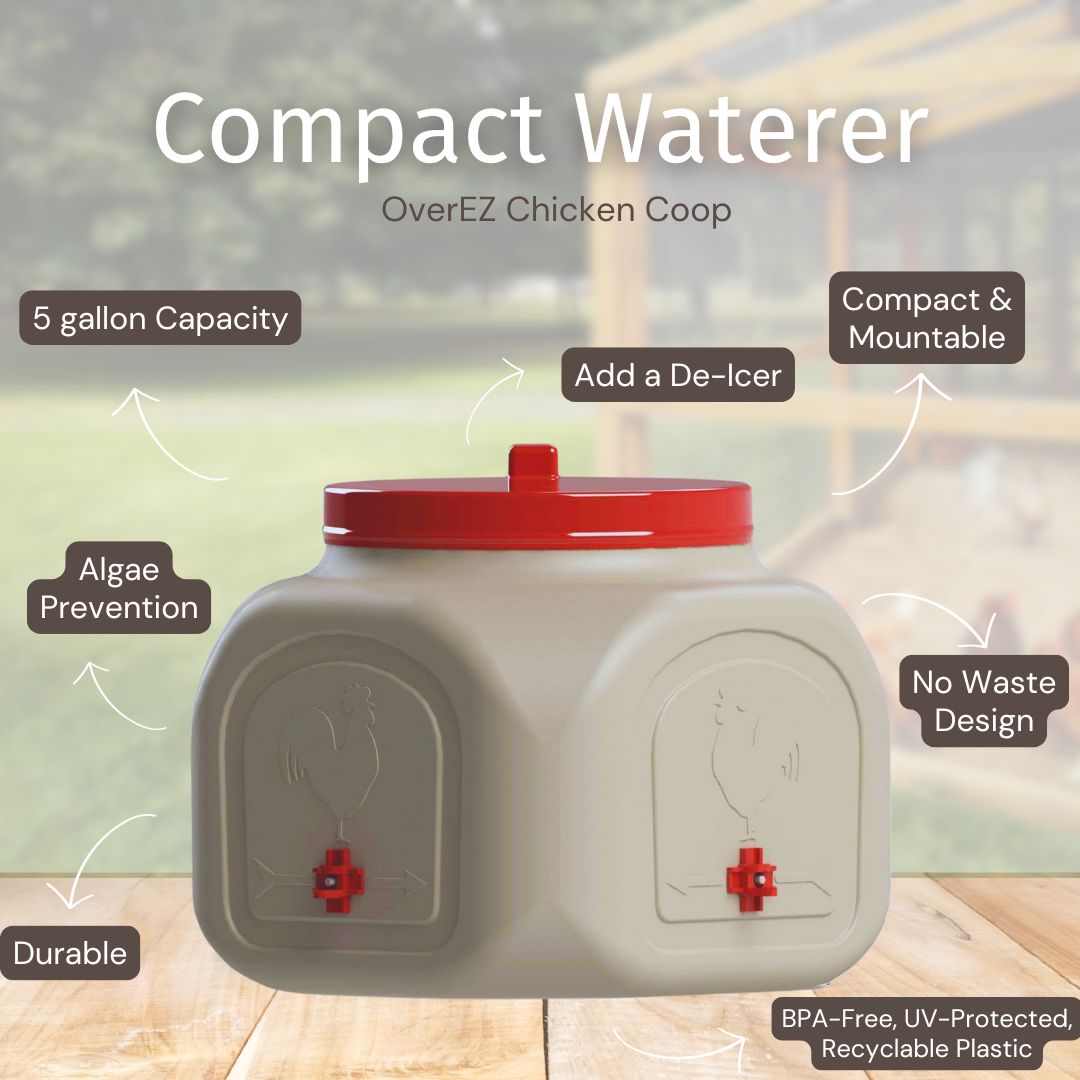
Hydration hardware that’s easy to clean supports electrolyte rotation during heat and encourages steady drinking.
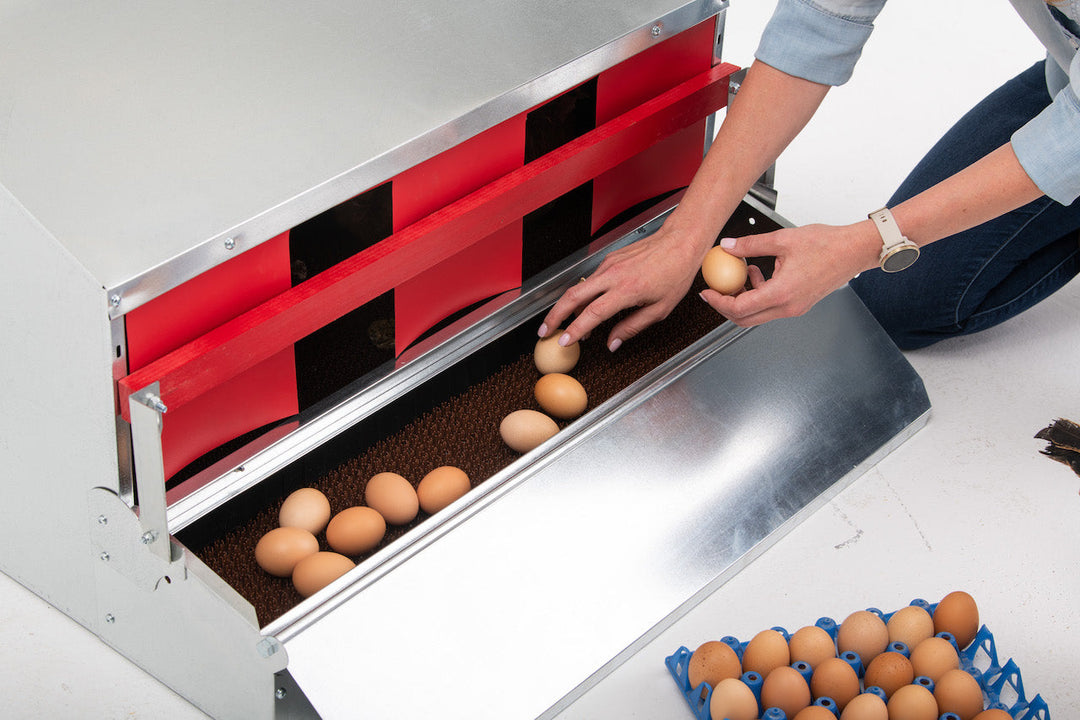
Clean, dry nesting areas reduce stress and bacterial load in the coop environment, supporting overall immunity.
Routine Dosing and Rotation: Keep It Simple, Consistent
Predictable routines are safer than ad‑hoc dosing. Start conservatively, observe, and return to baseline (fresh water, balanced feed) once the stressor passes. Use Chick Care Tips to refine these patterns for your flock size and climate:
- Electrolytes: Short runs during heat spikes or after transport. Return to fresh water after the event.
- Probiotics: The day after electrolyte cycles, after flock additions, or post‑cleaning to stabilize the gut.
- Vitamins: Targeted use during molt, post‑illness recovery, or noticeable stress signs—avoid indefinite daily use without reason.
Friendly reminder: For any illness or injury beyond minor first‑aid, consult a licensed poultry vet or extension agent. Natural care and good husbandry are preventive tools, not a substitute for veterinary treatment.
Antibiotic‑Free vs. Antibiotic‑Dependent Approaches
Antibiotics can be appropriate under veterinary direction, but an antibiotic‑free kit is built around prevention so you need them less often (or not at all). You’ll spend more time on routines—hydration strategy, coop sanitation, airflow, and early quarantine—but you’ll also see fewer cascading problems and lower long‑term costs. Az Chickens’ Hot‑Weather Health & Nutrition and Housing Environment pages show how simple environmental tweaks cut health risk dramatically.
Southwest‑Specific Notes: Heat, Dust, and Water
- Heat management: Multiple water points, shade, and air movement are daily health tools. Electrolyte cycles are part of planning, not last‑minute fixes.
- Dust control: Dry bedding is good; dusty bedding is not. Adjust cleaning cadence and airflow to reduce respiratory irritation.
- Water quality: In hard‑water areas, clean waterers more frequently to keep surfaces smooth and biofilm‑free. Consider rotating scrub brushes to avoid spreading residue.
For a one‑page hub of region‑specific insights, bookmark Resources & Education.
Cross‑Species Tip: If You Keep Quail Too
If your homestead includes quail, it’s convenient to share parts of the kit—sanitation tools, thermometer/hygrometer, and quarantine gear. Nutrition needs diverge, though; consult Az Chickens’ quail nutrition overview: Essential Nutrition Guide for Coturnix and Celadon Quail.
Maintenance and Restock Cadence
- Log electrolyte/probiotic use so you know when to reorder. Check expiration dates each season.
- Replace worn brushes and gloves on a schedule (e.g., monthly in peak season). Retire frayed scrubbers that trap debris.
- Audit waterers and sprayers seasonally—if cleaning gets difficult, swap parts or upgrade to more cleanable designs.
- Store the kit in a cool, dry, shaded place; label containers clearly (who it’s for, when to use, and mix ratios) so any family member can run the routine.
Buyer’s Checklist: Build the Right Kit for Your Flock
Use this list as a final pass before you buy. For first‑timers, the Az Chickens Beginner Chicken Starter Kit Guide walks through what “complete” really means.
- Electrolytes and probiotics suitable for your flock’s age and size
- Coop‑safe cleaner, brush, labeled spray bottle or pump sprayer
- Disposable gloves and a designated boot bath setup (plus spare coop shoes)
- Thermometer/hygrometer for the coop
- Quarantine crate/pen with spare waterer/feeder
- First‑aid basics: saline, antiseptic wash, gauze, styptic powder, poultry‑safe ointment
- Dedicated mixing container with scoop, clearly labeled
- Kitchen scale (for chicks and smaller breeds)
- Notes app or notebook for a simple health log
Further Reading from Az Chickens
- Hot‑Weather Health & Nutrition — Seasonal hydration plans and heat‑stress mitigation
- Beginner Chicken Starter Kit Guide — What a complete, value‑forward kit should cover
- Chick Care Tips — Practical routine building and rotation timing
- Heat‑Resistant Breeds — Climate‑aware flock planning
- Marek’s Disease in Arizona — Why biosecurity belongs in your kit
- Sustainable Hot Climate Practices — Durable tools and eco‑minded consumables
- Housing Environment — Ventilation and sanitation that drive health outcomes
- Resources & Education — Southwest‑specific poultry care hub
